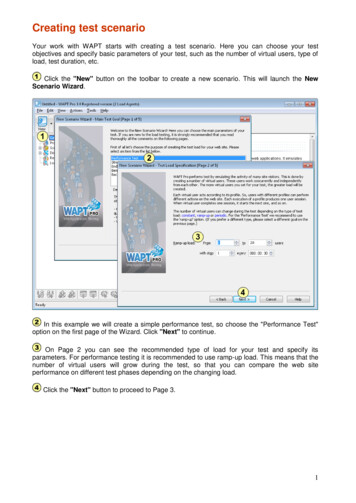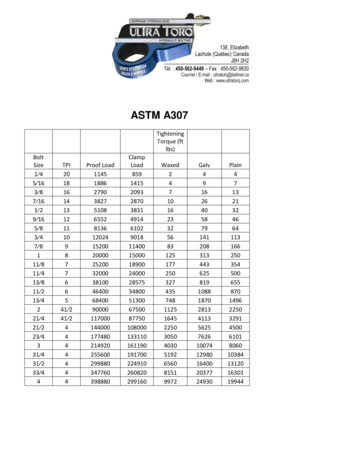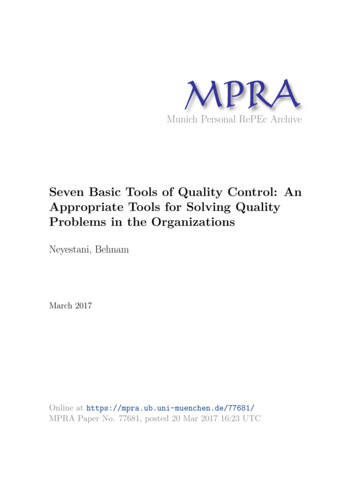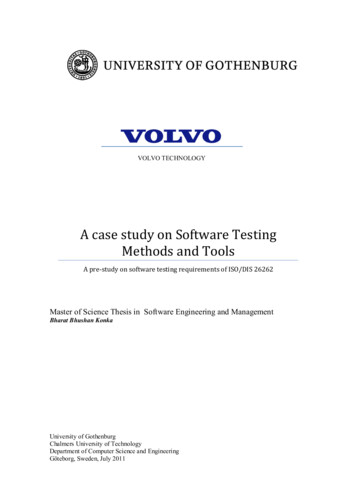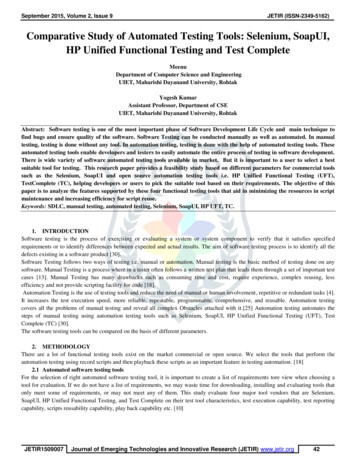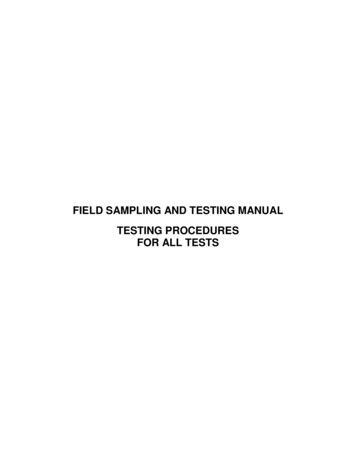
Transcription
QuerySurgeETL TESTING AUTOMATION TOOL
How QuerySerge is usefulQuerySurge Automates your Data Warehouse & ETL TestingImproves Data qualityReduces Cost and RiskAccelerate your testing cyclesReduces manual work
Integration with ETL toolsIt has command line API which make it flexible to useThrough its command line API we can use it with DataStageExecute Command stage in sequence job can be used for this purpose
Reporting in QuerySurgeIt has highly customizable built-in Reports supportMultiple filters can be applied on reports
CMD line API SQL parametersSQL paramets are not yet supported.Expected in future releasesRef: https://querysurge.zendesk.com/requests/672
DataStage Example sequence job
DataSurge Suite after data loadingThe component shown (Execute Command)will call a batch file from DataStage toexecute Data Suite from DataSurge. Thebatch file has the commands which usescommand line API to achieve the goal.The test pass/fail report can begenerated and notifications can alsebe sent, all this is handledautomatically by QuerySurge
DataSurge Suite after data loadingThese are similar calls to different suitswritten in QuerySurge. We can writedifferent batch files which can call our testsuits according to our need.QuerySurge makes the testing process forETL jobs really easy, manageable andstreamlined.
QuerySurge: Making a Data SuiteStep 1: Creating a query pairA query pair has a source and destination database for comparison.We write queries to test if expected behavior exists or not.After running the query pair the result is either PASS/FAILA query pair fails if one database entry behaves unexpectedly
Step 1: Creating a query pairGo to: Design Library QueryPairs Create New QueryPair
Step 2: Execute/Run QueryPairAfter we click Design-Time Run Run, the running state is shown below.
Step 2: Execute/Run QueryPair (Failure)One row mismatched in thisscenario, Due to that the testfailed; for a test to be successful allthe data must match.
Step 2: Execute/Run QueryPair (Failure)The details can be seen, we canview source and column table,queries and the rows mismatchedand eventually resulted in failureof the query pair.
Step 2: Execute/Run QueryPair (Success)All the rows matched exactlyaccording to the query pair sourceand target SQL queries.
Step 3: Creating Test SuiteGo to: Menu Create Test Suite
Step 3: Creating Test SuiteInclude the required query pair/s in the test suiteDrag/Drop query pairs to include in a test suite
Step 4: Execute/Run Test SuiteRight Click a Test Suite and click ‘Run Now’ To run it
Step 5: Execute/Run Test from CMDWe can also run a test suite using commandline APICommands are given in the documents whichcome with the productWe can use command line API to run suitsfrom any ETL toolStep by step guide to run a suite fromDataStage is give in word document in parentfolder.
Step 6: Generating reportsAfter successful execution of the suite, we can generate reports to get insight.The reports give us detailed information about the error, successful or failedexecution and the contaminated row number in case of contamination. We canexport the reports in word or .pdf format.
Step 6: Generating reportsClick of scenario details to get thedetails.
Step 6: Generating reportsClick on ‘Run Report with default filters’ to run the report. We can apply different type offilters to get required info. The log of the previous reports can also be seen by clicking of‘Open Report’
The Detailed view of report: Page1
The Detailed view of report: Page2
Step 7: Running DashboardDashboard gives us the detailed view, statistics and graphs.
Step 7: Running DashboardSelect a Test Suite to run itsdashboard
Step 8: Charts and infoBelow graphs give us the detailed information.
erysurge.zendesk.com/requests/672QuerySurge Official Site: http://www.querysurge.com/
QuerySurge makes the testing process for ETL jobs really easy, manageable and streamlined. QuerySurge: Making a Data Suite Step 1: Creating a query pair A query pair has a source and destination database for comparison. We write queries to test if expected behavior exists or not. After running the query pair the result is either PASS/FAIL A query pair fails if one database entry behaves .
